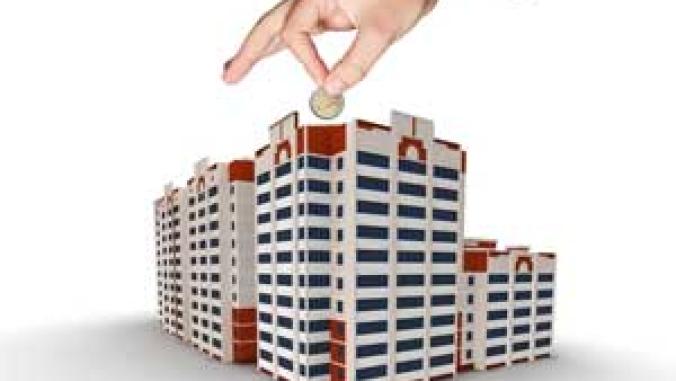How Energy Modeling Can Create 'Model Prisoners' & Closing Thoughts on Greenbuild 2009
<p>The good news: The ultimate environmental footprint of green buildings will become much clearer in the future. The bad news: In the short run, it'll be much more complicated -- especially if professionals keep falling prisoner to tools meant to help them.</p>

Images CC licensed by Flickr user banspy. http://www.flickr.com/photos/41304165@N04/3843960604/
Like a Ginsu knife commercial (but wait, there's more!), GreenerBuildings.com concludes its special Greenbuild coverage with a look back over the week in Phoenix.
Muckraking is a time-honored tradition in the press. Given the snarling cur-dogs GreenerBuildings.com sicced on the show this year, perhaps fear of the demise of the print media and its ability to perform a watchdog function is overblown.
Greener World Media founder Joel Makower, one of the most respected, levelheaded and take-no-prisoners guardians against greenwash (p.s. you can send the single-malt to my home address) went looking for trouble at Greenbuild and found . . . not much of anything. Similarly, GreenerBuildings.com blogger Leanne Tobias who covers an iron fist with silky prose felt that this year's Greenbuild had atoned for the sins of the past couple of years.
However, the folks down at Forest Ethics did find something wrong on the Greenbuild floor and conducted a bit of street theater worthy of Edward Abbey, who incidentally made Tucson his final resting place.
{related_content}From the U.S. Green Building Council's Building Performance Initiative, to the update on the forest certification protocol, to the ongoing LCA into LEED activities, to B Corp's expanded certification into the building industry, a new layer of methods and tools, reflecting the increased sophistication of the industry, are being introduced.
The good news is that the ultimate environmental footprint of green buildings will become much clearer in the future. The bad news, in the short run, is that it's all about to get a lot more complicated. But, as my college rowing coach used to say, as we would complain about our bleeding hands during practice: "You're young, you'll get over it."
As if over 100 educational sessions at Greenbuild were not enough, a lot more printed substance about the environmental, economic, and in situ performance of green buildings was released last week and in the run-up to the conference.
GreenerBuildings.com issued the Green Building Market and Impact Report (GBMIR) -- written by yours truly -- which is available for free download online. I found that there has been a great deal of progress in the market penetration of LEED projects, however we still know surprisingly little about the actual environmental impacts of both individual projects and LEED projects as a whole.
The USGBC-sponsored Booz Allen analysis of the macro economic impacts of green found that to date 173 billion dollars of green construction activity and 2.4 million jobs had been created or supported through green buildings in general, including LEED. These green building figures are expected to grow to a total value of 554 billion dollars and nearly 8 million jobs in the next five years -- a factor three higher compared to the previous eight years.
 The Booz study also used a macroeconomic model to estimate the energy savings and carbon reductions from green buildings. Its top-down results varied by approximately 100 percent compared to our bottom-up analysis. In my mind, this variance is good news, particularly in that the GBMIR was conservative compared to the USGBC study. If nothing else, we have an upper and lower boundary of reasonable analysis -- with my study being the LOWER bound. I think this shows that over time the green building impact on global warming will continue to be significant and growing.
The Booz study also used a macroeconomic model to estimate the energy savings and carbon reductions from green buildings. Its top-down results varied by approximately 100 percent compared to our bottom-up analysis. In my mind, this variance is good news, particularly in that the GBMIR was conservative compared to the USGBC study. If nothing else, we have an upper and lower boundary of reasonable analysis -- with my study being the LOWER bound. I think this shows that over time the green building impact on global warming will continue to be significant and growing.
The fact that there is such significant variance in energy savings estimates is not surprising given how badly we in the United States suck at energy modeling. The USGBC Chicago chapter released an outstanding case study report, "Regional Green Building Case Study Project: A post-occupancy study of LEED projects in Illinois," that went into great detail on a wide variety of green building metrics in 25 LEED-certified buildings.
The authors correctly caution about drawing any macro performance conclusions from such a small sample. But their framework of analysis is exactly right: The only proper "baseline" comparison of a building's performance is itself. As the case study report points out, every building is unique and therefore broad-based comparisons are fraught with peril.
 But the conclusion that our energy modeling needs some serious help is an inescapable conclusion of this report. Given that the AVERAGE divergence between the calculated design energy consumption and post-occupancy energy use was over 100 percent means that . . . well, I'm almost certain what I'm thinking is not printable.
But the conclusion that our energy modeling needs some serious help is an inescapable conclusion of this report. Given that the AVERAGE divergence between the calculated design energy consumption and post-occupancy energy use was over 100 percent means that . . . well, I'm almost certain what I'm thinking is not printable.
Honestly, the engineering and modeling teams of these projects -- they know who they are -- ought to hang their heads in shame: 100 percent+ variance, with some measured EUIs even as high as 250 percent above what was modeled?!
And while we're decking the Halls of Shame I'm sure there are a couple of hooks in the corridor for the developers of the various energy modeling software packages. I don't want to blame the tools too much; there is a fair body of evidence from California showing that field performance is not too far off from model performance where there is a bit of experience with the tools.
But seriously, if energy models were cars, the engineers of these wrecks ought have their licenses revoked.
I simply don't understand how licensed architects and professional engineers can be so absolutely clueless about how their buildings might perform in real life that they would be so far off. We need to seriously beef up the building science education of our designers and engineers to prevent these kinds of travesties from continuing. If you can't do basic crap detecting on an energy model, it's not clear to me you deserve either an architecture or an engineering degree. Even Grandpa's outraged.
(Better FedEx that single-malt.)
Rob Watson is the executive editor of GreenerBuildings.com. You can reach Rob at [email protected] or follow him on Twitter @KilrWat
Images CC licensed by Flickr user banspy.





